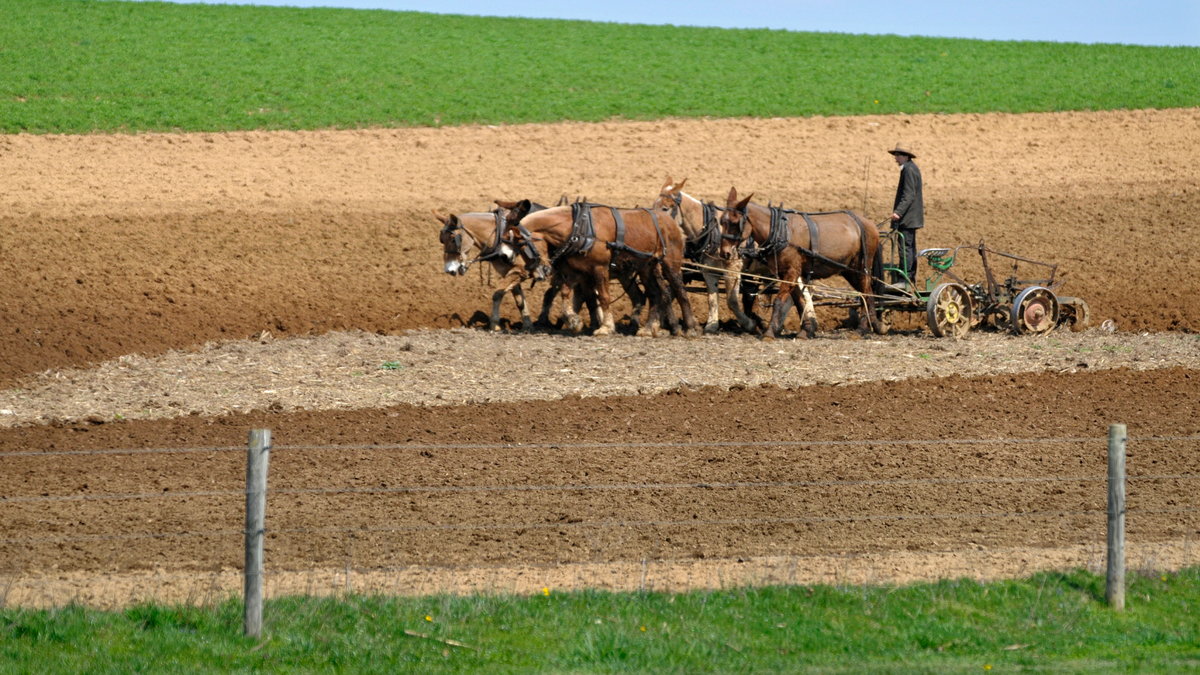
FILE - In this April 15, 2011 file photo, an Amish farmer plows a field near New Holland, Pa. The Amish population in Pennsylvania's Lancaster County is continuing to grow each year, despite the encroachment of urban sprawl on their communities. The U.S. Census Bureau says the county added about 2,500 people in 2018. LNP reports that about 1,000 of them were Amish. (Dan Marschka/LNP/LancasterOnline via AP, File)
LANCASTER, Pa. – The Amish population in Pennsylvania's Lancaster County is continuing to grow each year, despite the encroachment of urban sprawl on their communities.
Some experts are concerned that a planned 75-acre (30-hectare) housing and commercial project will make it more difficult for the county to accommodate the Amish.
U.S. Census bureau figures show the county added about 2,500 people in 2018, and about 1,000 of them were Amish, the news site LNP reported on Friday.
Lancaster County's Amish population reached 33,143 in 2018, up 3.2%, from the previous year, according to Elizabethtown College researchers. That growth is consistent with previous years.
The Amish, who typically have large families, accounted for about 41% of the county's overall population growth last year. The Amish population in the county doubles about every 20 years, the news site reported. In 1970, the Amish numbered about 7,000. That climbed to about 12,400 by 1990 and 16,900 by 2000.
But a new development in the midst of a thriving, centuries-old Amish community, could impact their way of life that includes horse-drawn carriages, not automobiles.
The proposed development, called Oregon Village, would be in an unincorporated area in Manheim Township. The plan includes high-density housing, restaurants, a supermarket, a hotel, a bank and retail on two sites totaling 75 acres (30 hectares).
Donald Kraybill, an authority on Amish culture, told Manheim Township commissioners this week that some in the community have told him they are worried about the development and the increased traffic it would bring.
"The proposed project would disturb, disrupt and threaten their viability," Kraybill said. "A community can only take so much in terms of putting up with factors that they feel may endanger the safety and the compatibility of their culture with a particular area."
He said he heard from some community members that they would rather move than deal with increased traffic. They chose not to speak out about their concerns due to a faith-based reluctance to participate in government, he said.
The Amish rely on horse-drawn buggies and carriages to attend worship services, weddings, funerals and other activities in their tight-knit communities. Many children walk along back roads to attend the 11 one-room schools near the planned Oregon Village.
___
Information from: LNP, http://lancasteronline.com

